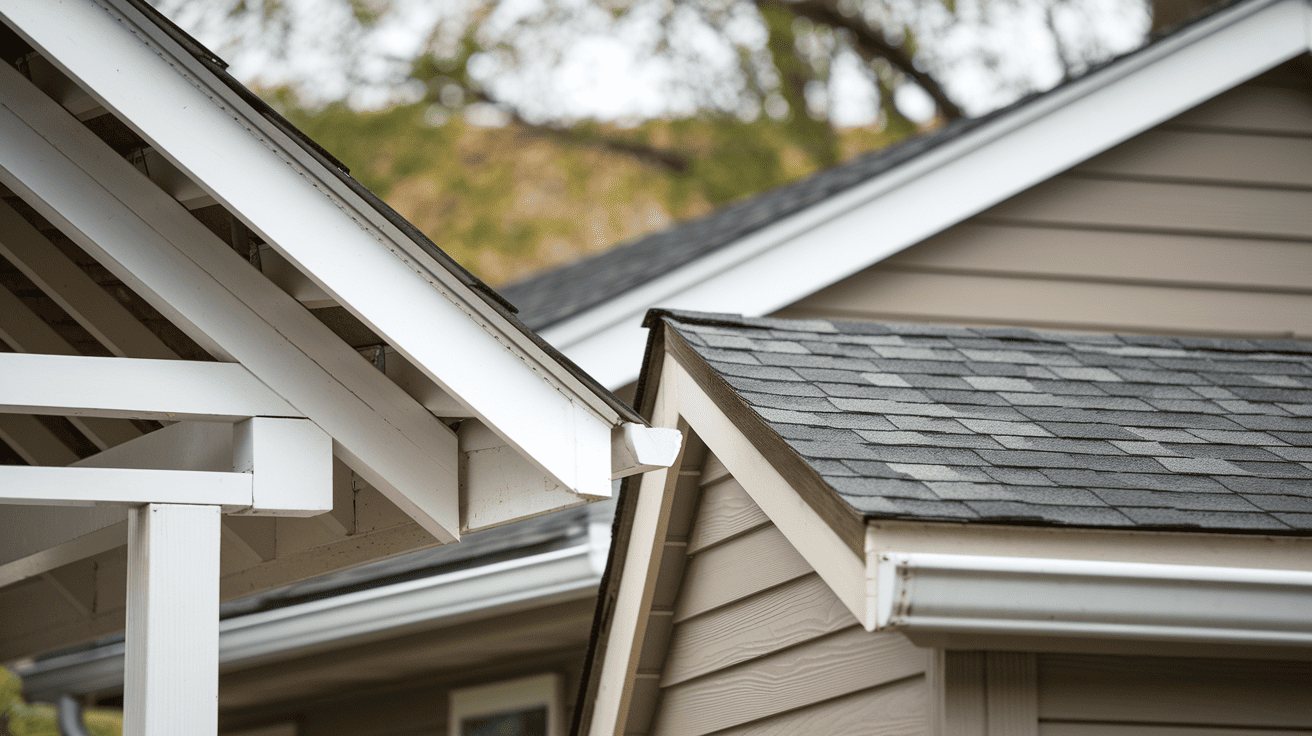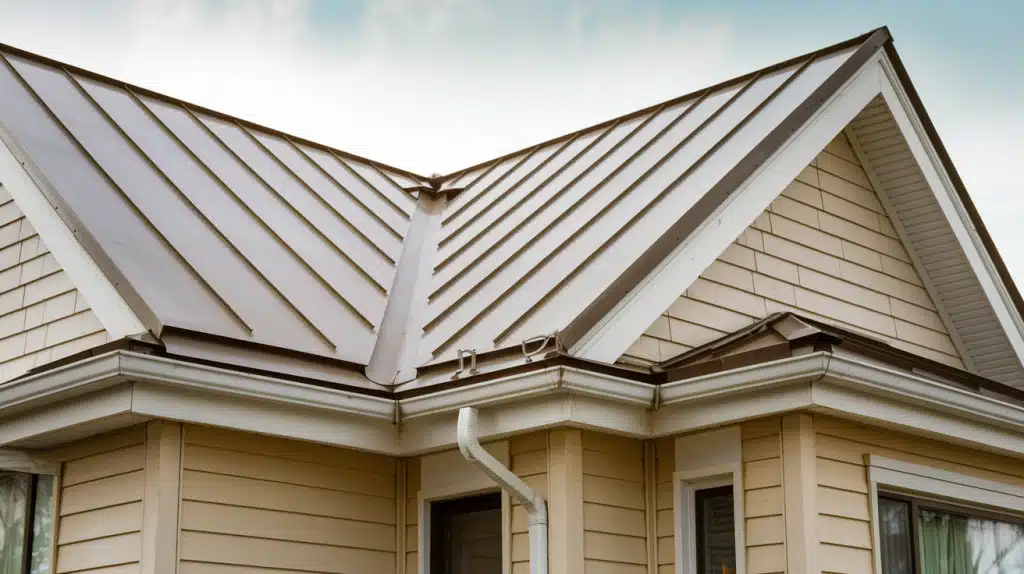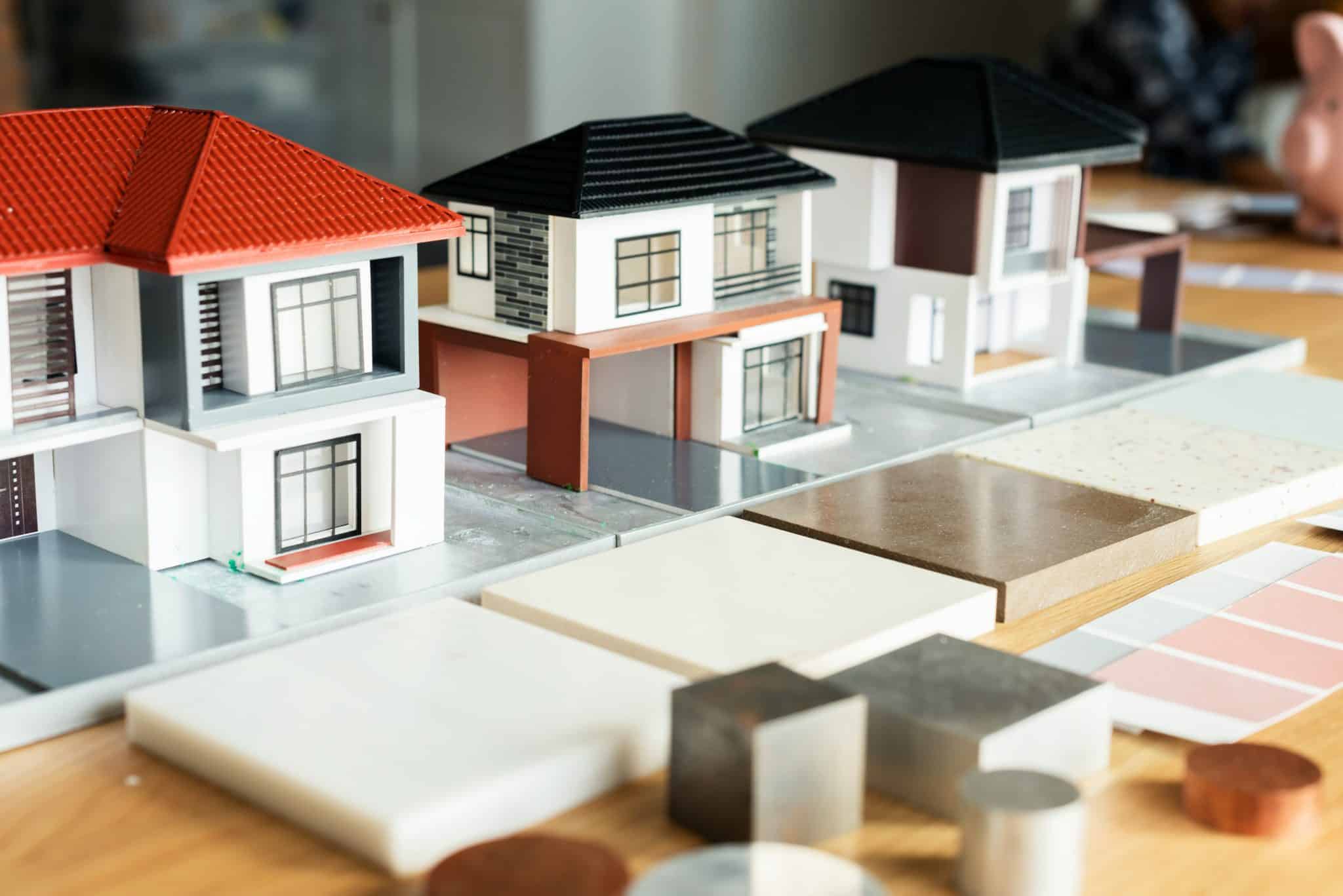Looking at your roof, you might wonder what those overhanging parts do. Most homeowners ignore roof eaves until problems arise, and by then, repairs can cost thousands.
I learned that properly maintained eaves can add 1-3% to your home’s value while preventing costly water damage.
They’re not just decorative elements but crucial protective systems that channel water away from your foundation, control pests, and even reduce energy costs.
I’ve spent years helping homeowners understand these often overlooked roof components. Without proper eaves, you’re inviting water damage, pest problems, and structural issues that could have been easily prevented.
In this guide, I’ll walk you through everything you need to know about roof eaves, from identifying the four main types to spotting problems early and understanding maintenance costs.
You’ll learn how to protect your most valuable asset with simple knowledge.
What Are Roof Eaves?
Roof eaves are the parts of your roof that hang over the sides of your house. They stick out past your exterior walls and create an overhang.
Think of eaves as the roof’s extended edges. When you look at any house, the roof doesn’t end where the wall stops. Instead, it continues outward for a few feet. This extended section is the eave.
Eaves protect your house from weather damage. Rain and snow hit the eaves instead of running down your walls. This keeps water away from your foundation. Eaves also enhance the appearance of your house by creating clean lines on your roofline.
Most eaves measure between 12 to 24 inches wide. They work with gutters to direct rainwater away from your home’s structure.
What Are Roof Eaves Made Of?
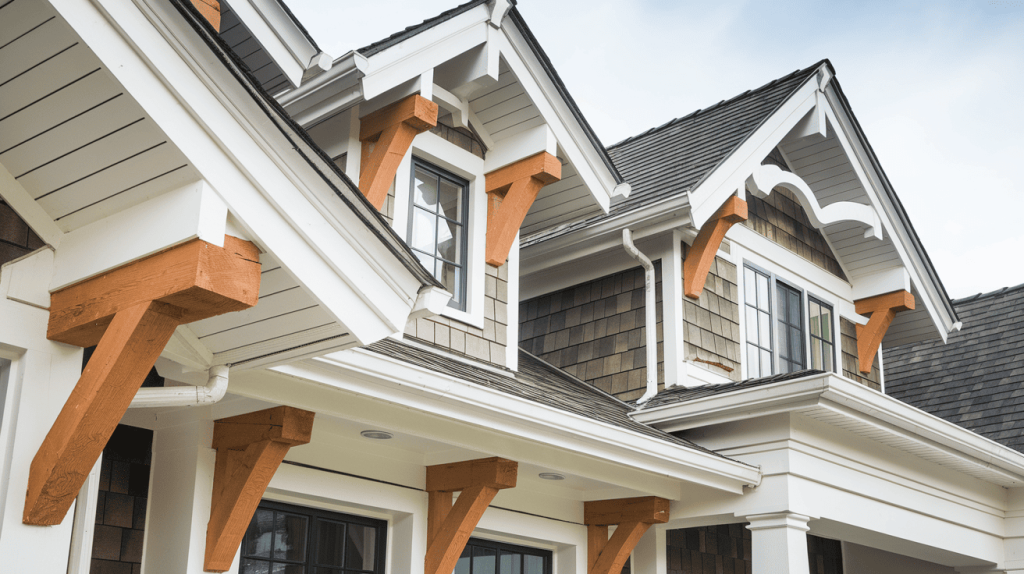
Roof eaves consist of three main parts that work together to protect your home and create a finished look.
- Soffit: The soffit forms the bottom surface of your roof overhang. You can see it when you look up at your roof from below. Most soffits have small holes or vents. These openings let fresh air flow into your attic space. This airflow helps prevent moisture buildup and keeps your roof healthy.
- Fascia: The fascia is the straight board that runs along the edge of your roof. It sits vertically and supports the bottom row of your roof tiles or shingles. The fascia also provides a clean, finished appearance to your roofline. Many gutters attach directly to the fascia board.
- Rafter Tails: Rafter tails are the ends of your roof’s wooden frame pieces. These structural beams extend past your home’s outer walls. The rafter tails create the base structure that supports both the soffit and fascia. They determine how far your eaves extend from your house.
Each part plays a specific role in keeping water away from your home’s foundation and walls. Together, they create the complete eave system that protects your property from weather damage.
Role of Roof Eaves in Building Protection
Roof eaves serve several vital purposes that protect your home and improve its performance. Here are the key functions they provide.
1. Water Drainage
Eaves channel rainwater away from your home’s foundation and walls. When rain falls on your roof, it flows down to the eaves and into the gutters. This prevents water from pooling around your foundation, which could cause costly damage over time.
Without proper eaves, water would run straight down your walls, creating problems such as basement flooding or foundation cracks.
2. Pest Control
Well-designed eaves help keep unwanted visitors out of your attic. The closed design prevents birds, squirrels, and insects from finding easy entry points into your roof space.
Proper ventilation holes in the soffit allow air to flow while keeping pests outside. This protects your insulation and prevents damage from nesting birds and other animals.
3. Energy Efficiency
Eaves create shade for your windows and walls during the hot summer months. This natural shading reduces the amount of direct sunlight that hits your home, which in turn lowers your cooling costs.
In winter, when the sun sits lower in the sky, sunlight can still reach your windows to provide natural warmth. This seasonal benefit helps regulate your home’s temperature throughout the year.
4. Visual Appeal
Eaves improve how your house looks from the outside. They create clean, finished lines that make your roofline appear complete and professional. Different eave styles can match various home designs, from traditional to modern. A house without eaves often looks unfinished and lacks the character that well-designed overhangs provide.
Types of Roof Eaves
Your roof eaves come in several styles, each with distinct features and benefits. Here’s how they differ from one another.
1. Open Eaves
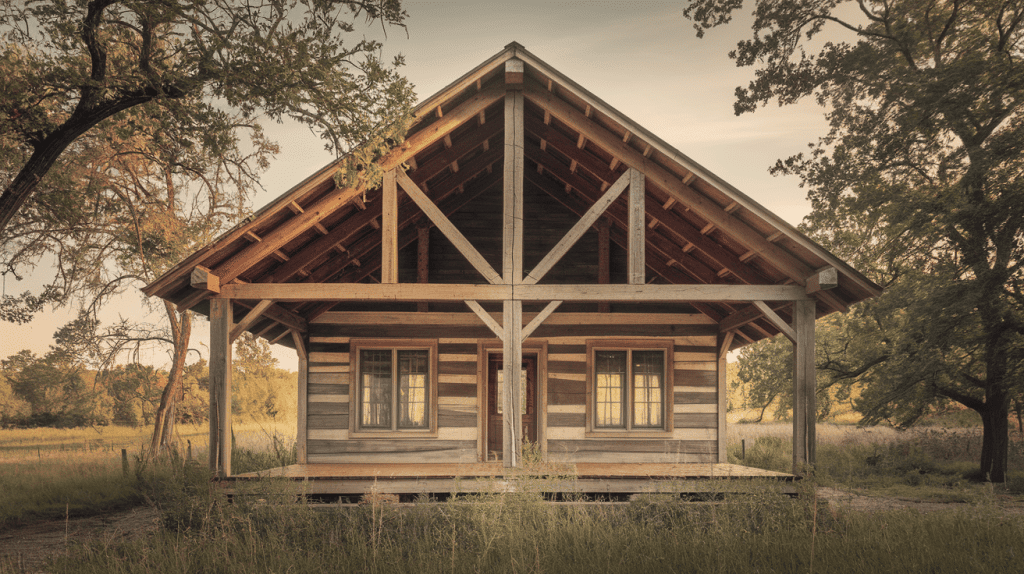
Open eaves leave the roof structure visible from below. When you look up, you see the wooden beams that support your roof. This style gives homes a natural, unfinished look that many people find appealing.
Open eaves work well for ranch houses, log cabins, and craftsman-style homes. However, they require more maintenance since the wood stays exposed to the weather.
Ideal For: Open eaves are ideal for homeowners who want a rustic appearance and don’t mind regular upkeep. They suit rural properties, vacation homes, and houses with traditional or country designs.
2. Closed Eaves
Closed eaves cover all the structural elements with smooth panels called soffits. A vertical board called the fascia runs along the edge. This creates a neat, complete appearance that hides the roof’s framework.
Most suburban homes use closed eaves because they look professional and protect the wood from rain and snow. They also prevent birds and insects from nesting in the roof area.
Ideal For: Closed eaves are ideal for busy homeowners who want low maintenance and maximum protection. They work best in areas with harsh weather conditions and for homes in neighborhoods with strict appearance standards.
3. Boxed Eaves
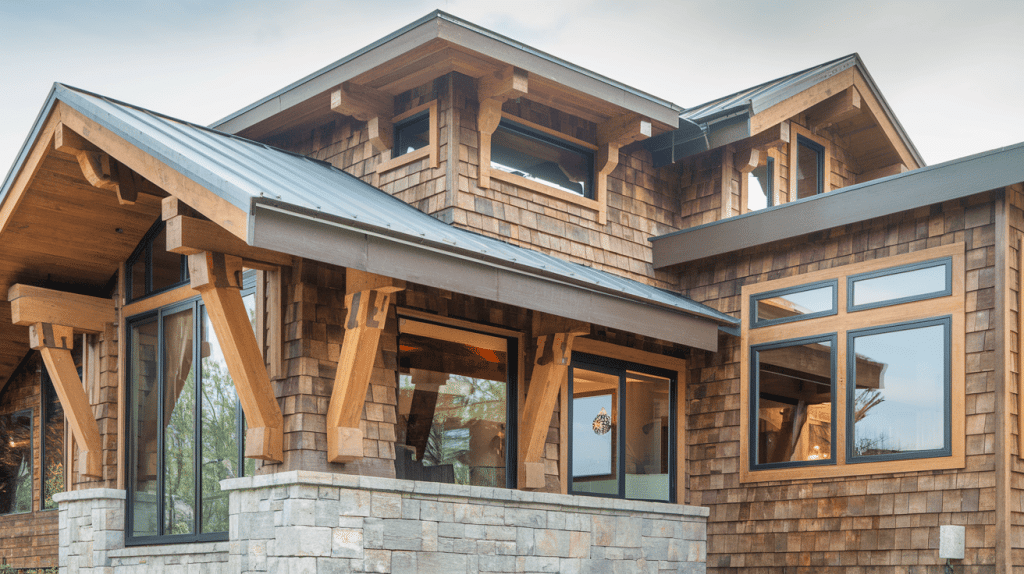
Boxed eaves mix elements from both styles. They might show some wooden details while covering other parts. This approach gives you character without full exposure to the elements. Boxed eaves suit homes that want some rustic charm but need modern protection levels.
Ideal For: Boxed eaves are ideal for homeowners who want visual interest without full exposure risks. They work well for transitional home styles and properties that blend traditional and modern features.
4. Abbreviated Eaves
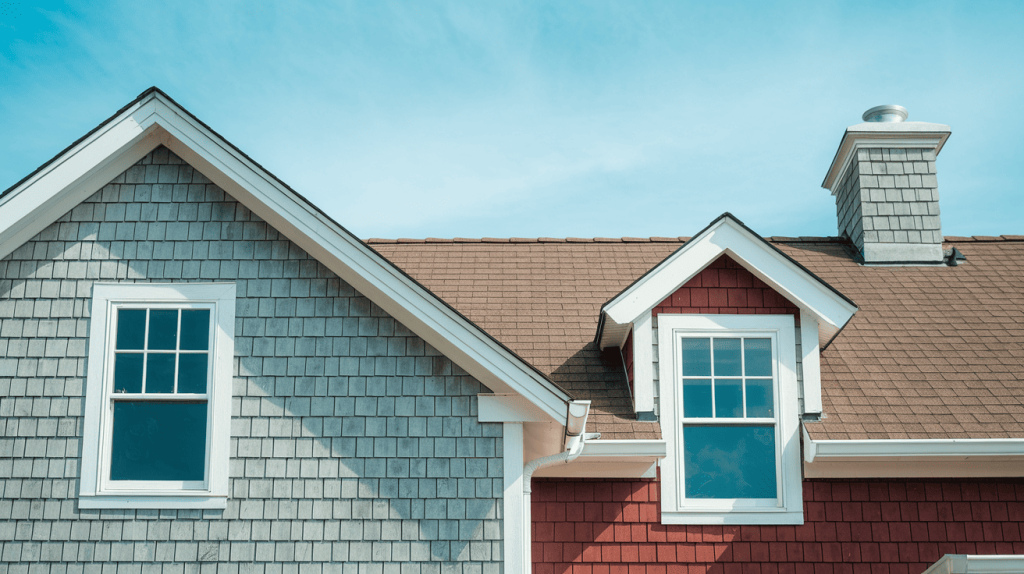
Abbreviated eaves barely extend past the wall. They create very short overhangs that give buildings a sharp, contemporary look. These work well on modern homes with flat or low-pitched roofs. The trade-off is less protection from rain running down your walls.
Ideal For: Abbreviated eaves are ideal for modern architecture and minimalist designs. They suit dry climates, urban settings, and homes with strong geometric lines.
Cost Considerations for Roof Eave
Understanding the costs involved with roof eaves helps you plan your budget and make smart decisions about your home’s protection and value.
Installation Costs
The price of installing new eaves depends on several key factors:
| Component | Cost Range | Details |
|---|---|---|
| Basic Wood Eaves | $8-15 per linear foot | Standard residential option |
| Composite/Fiber Cement | $12-25 per linear foot | Premium, low-maintenance materials |
| Labor | $6-12 per linear foot | Professional installation |
| Average Home (150 linear feet) | $2,100-5,600 | Complete installation project |
Most homeowners spend between $2,500 to $4,200 for standard eave installation. Complex designs or high-end materials increase costs.
Maintenance Costs
Regular upkeep prevents expensive repairs and extends the eave’s lifespan:
| Maintenance Task | Professional Cost | Frequency |
|---|---|---|
| Gutter Cleaning | $150-300 | Twice yearly |
| Painting/Sealing | $400-800 | Every 3-5 years |
| Minor Repairs | $200-500 | As needed |
| Annual Maintenance | $200-400 | Regular upkeep |
Major Repair Costs:
- Water damage repairs: $1,000-5,000
- Structural damage: $2,000-8,000
Return on Investment
Well-maintained eaves boost your home’s value and street appeal. Real estate experts say proper eaves can add 1-3% to your home’s value by improving its appearance and protection. They also reduce energy costs by providing shade and proper ventilation.
Quality eaves typically pay for themselves through energy savings and avoided repairs within 5-10 years. They also make your home more attractive to buyers if you decide to sell.
Conclusion
Your roof eaves work silently above, but now you know to keep them healthy. From open to closed, boxed to abbreviated, each style has its place and purpose in protecting your home.
The next time you walk around your house, look up with confidence. You’ll spot potential issues before they become expensive headaches. You’ll know when to call professionals and when you can handle maintenance on your own.
Most importantly, you understand that small preventive steps today save major repairs tomorrow. Clean gutters twice a year, inspect them for damage after storms, and seal gaps before pests can move in.
Your home is your largest investment. With this knowledge of roof eaves, you’re equipped to protect them properly. Take a walk around your property this weekend; those overhangs deserve a closer look.

